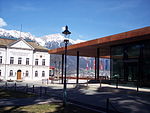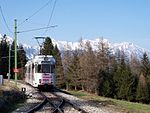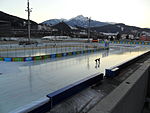Bergisel Ski Jump

The Bergisel Ski Jump (German: Bergiselschanze), whose stadium has a capacity of 26,000, is a ski jumping hill located in Bergisel in Innsbruck, Austria. It is one of the more important venues in the FIS Ski Jumping World Cup, annually hosting the third competition of the prestigious Four Hills Tournament. Its first competitions were held in the 1920s using simple wood constructions. The larger hill was first built in 1930 and was rebuilt before the 1964 Winter Olympics for the individual large hill event. Twelve years later, the venue hosted the same event. The hill in its current form was finished in 2003 and was designed by the British Iraqi architect Zaha Hadid.
Excerpt from the Wikipedia article Bergisel Ski Jump (License: CC BY-SA 3.0, Authors, Images).Bergisel Ski Jump
Bergiselweg, Innsbruck Wilten (Wilten)
Geographical coordinates (GPS) Address External links Nearby Places Show on map
Geographical coordinates (GPS)
| Latitude | Longitude |
|---|---|
| N 47.248888888889 ° | E 11.399166666667 ° |
Address
Bergisel Sprungschanze Stadion
Bergiselweg 3
6020 Innsbruck, Wilten (Wilten)
Tyrol, Austria
Open on Google Maps











